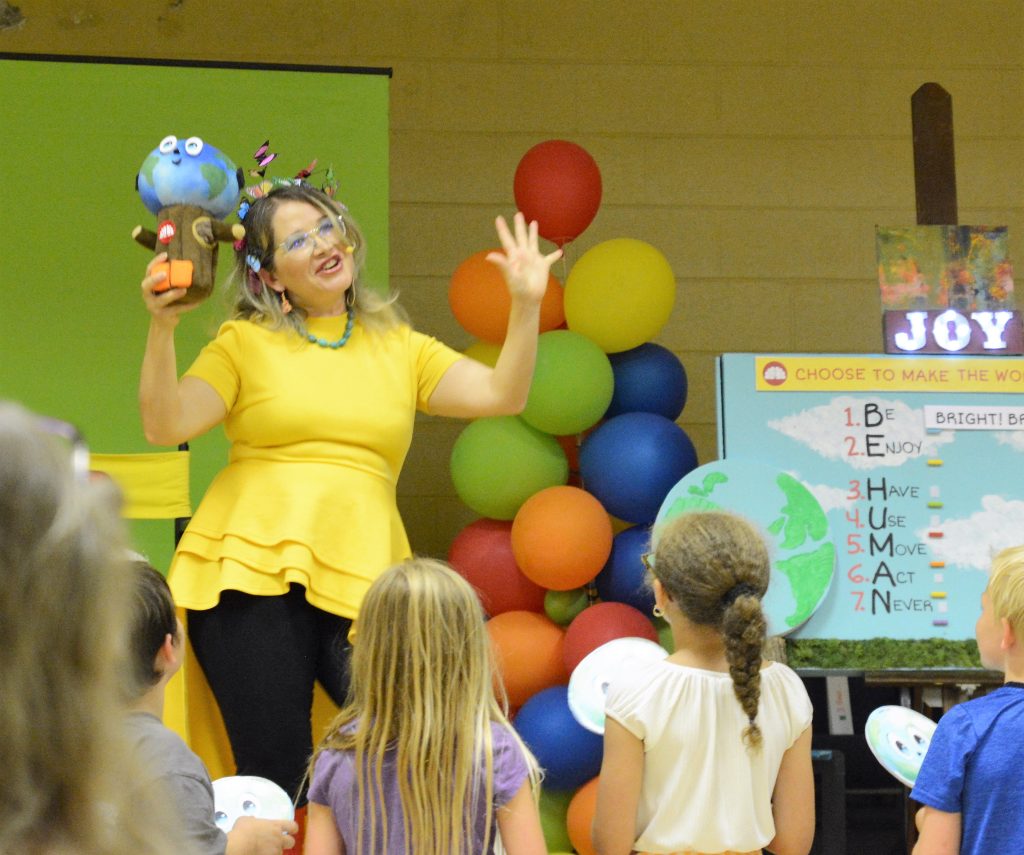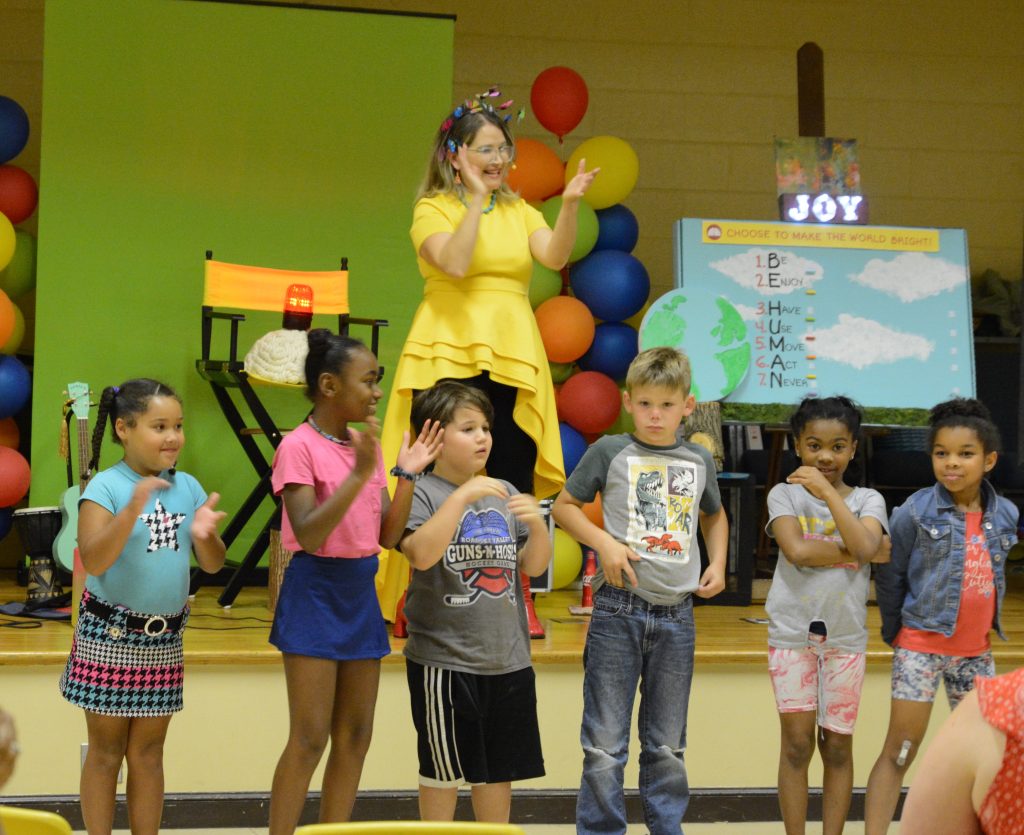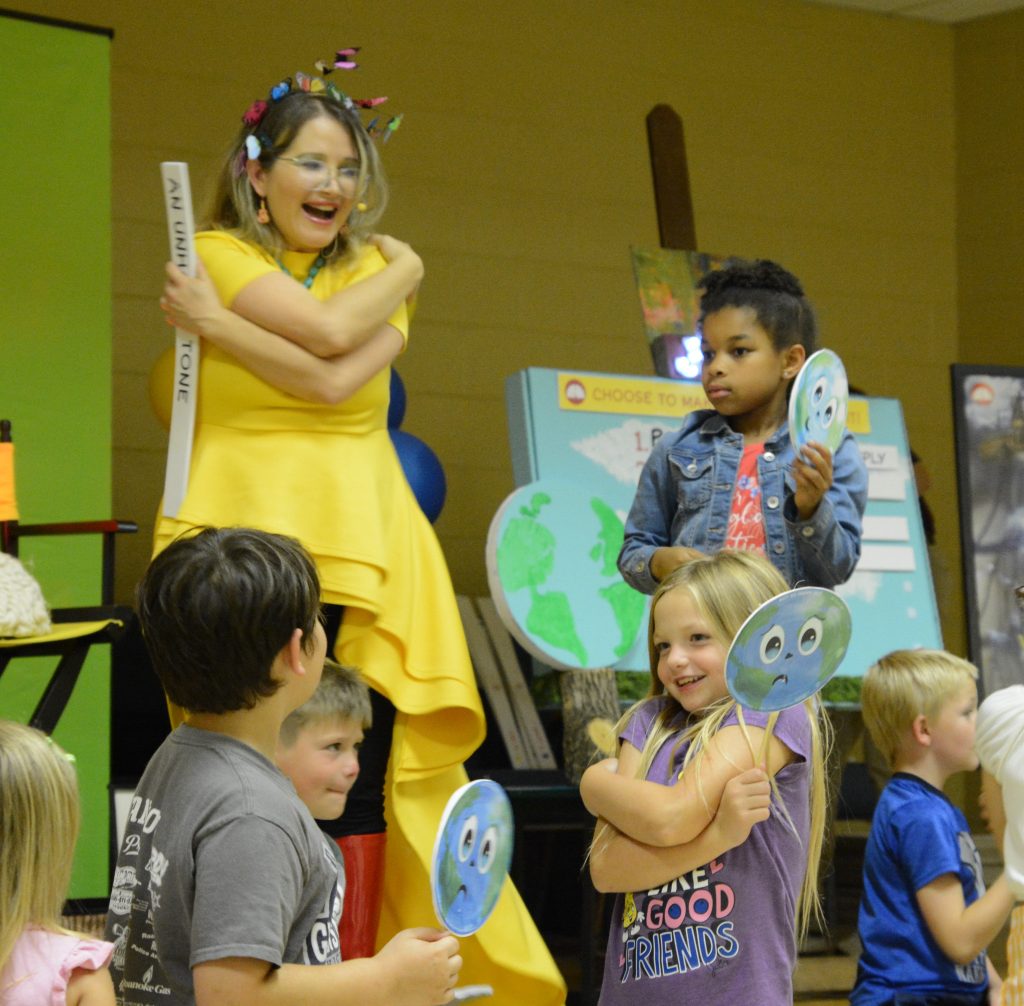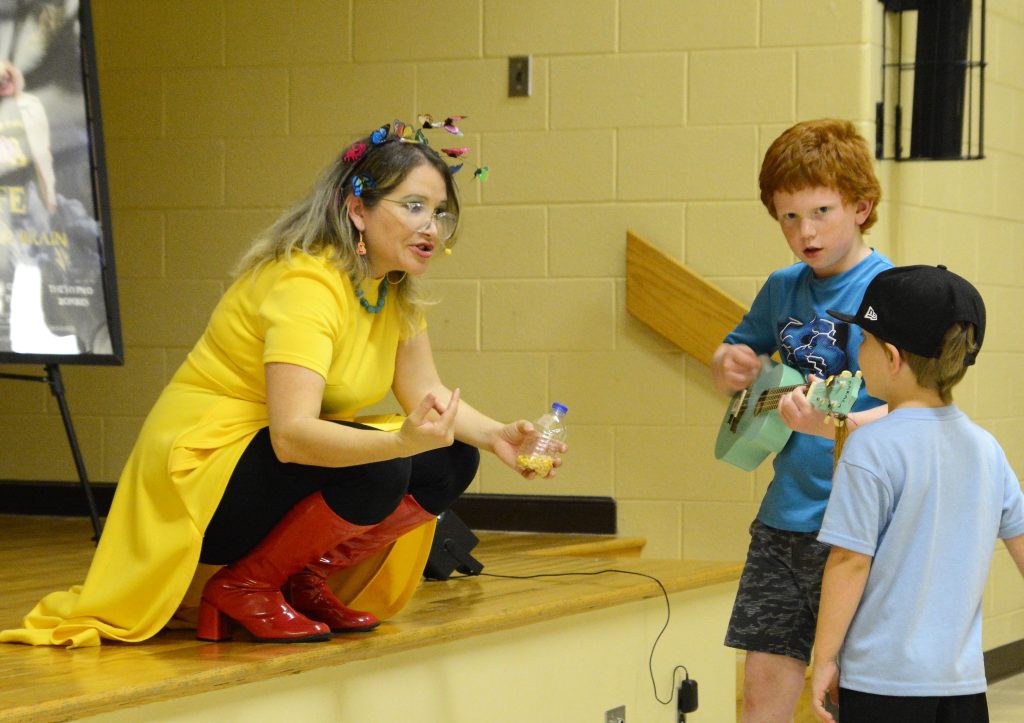By Debbie Adams
Carolina Smales—artistically known as Carol Joy—shared her dynamic talents, her bubbly
personality, and an upbeat message with students in the Boys and Girls Clubs of Southwest
Virginia at Vinton Baptist Church on June 27. Her purpose was to teach them about the “inner
world of the brain and how to care for it.”

engineer Carol Joy shares her program, “The World Inside Your Head” with children in the
Vinton Baptist Boys and Girls Club of Southwest Virginia. (photos by Debbie Adams)
Joy is a native of Venezuela but came to the United States in 2003. She was originally trained
and worked as a chemical engineer but in 2020 decided to combine her knowledge of science
with what brings her the most happiness in life—music, art, and writing for children. This
resulted in the creation of her brain science program, “Joi (Joy of Interaction) Neuron,” in
partnership with pediatrician Dr. Natalia Jaimes. (Colleagues have been known to refer to Joy as
“brain researcher extraordinaire.”)
Joy presented one of the high-energy programs they have developed, “The World Inside Your
Head,” at Vinton Baptist, teaching students about “their inner world, their bright brain, and how
to calm down on the ‘stormy’ days,” all at their level of understanding. She did this through
songs, stories, dance, and games.
One of her main themes for the children and their parents was to “choose joy,” in the everyday
surprises, good and bad, that life brings. She told them that something as simple as thinking of
their favorite food could help lift a bad mood. (Her favorite is her mother’s soup.) Her advice to
all is to choose to live in the present, “yesterday is past; the future is tomorrow; take control and
live today. Find your joy in the little things you love the most. Do what you love and show that
love to others.”
Joy shared a story about something that transpired as a child that inspired her to “look inside my
head.” At age five, she was on top of a sliding board. Bullies began to jeer at her, urging her to
jump off, saying she “had a chicken inside her head” when she refused. She ran home and asked
her mother (a biology teacher) if there was really a chicken in her head. Her mother’s response was “of course there is a chicken inside your head. Your brain keeps everything inside your head, especially what you love,” and Joy had always loved baby chicks. Her point was that “the things we love the most, we keep in our minds all the time. There is a world inside our heads, created by our brains.”
She brought along some models of the brain, noting that “while the brain only weighs three
pounds, it is our best friend. It’s not scary and its cells talk to one another chemically and
electrically.” She threw in a plug for drinking lots of water to keep our brains healthy and
hydrated.
Joy next segued into a discussion of the changes to your brain and heart if you are worried,
nervous, or afraid (they go into emergency mode), with the brain asking for more blood to help
resolve the problem.
Next, she called her friend, local writer Shawn Nowlin to the stage, describing him as her
identical twin, although she is a petite woman and he is tall (6’7”) and muscular, with a
moustache—however, “when it comes to our brains, we are the same.” She asked Nowlin to
share some of his fears and worries.
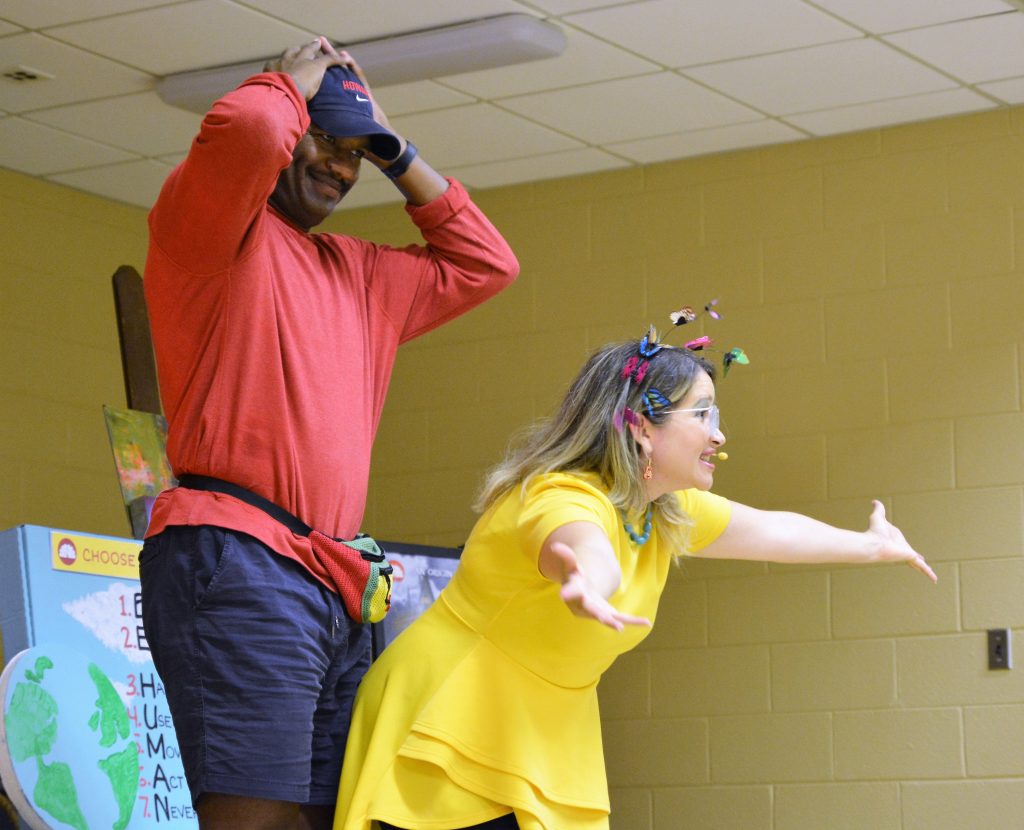
stage as her “identical twin,” at least as far as brains go.
She then asked the children to share some of the times they had felt those emotions. They were
eager to talk about being afraid of animals, a brother’s seizure, meeting new people, their safety,
and more.
Joy moved on to how teach some life skills on how to help the brain generate happy feelings.
She introduced the audience to Geo, the main character in her first book, “Geo, a Magical
Surprise,” a magical baby (part human/part tree) who carries a whole world on his head.
Next up was talk of reasons to be thankful and a playful, catchy song, “I’m not dead; I’m alive,”
as a main reason to rejoice. She explained that when you are down, “think of something that
makes you happy,” do a favorite activity, pray, or “say kind words to your brain.”
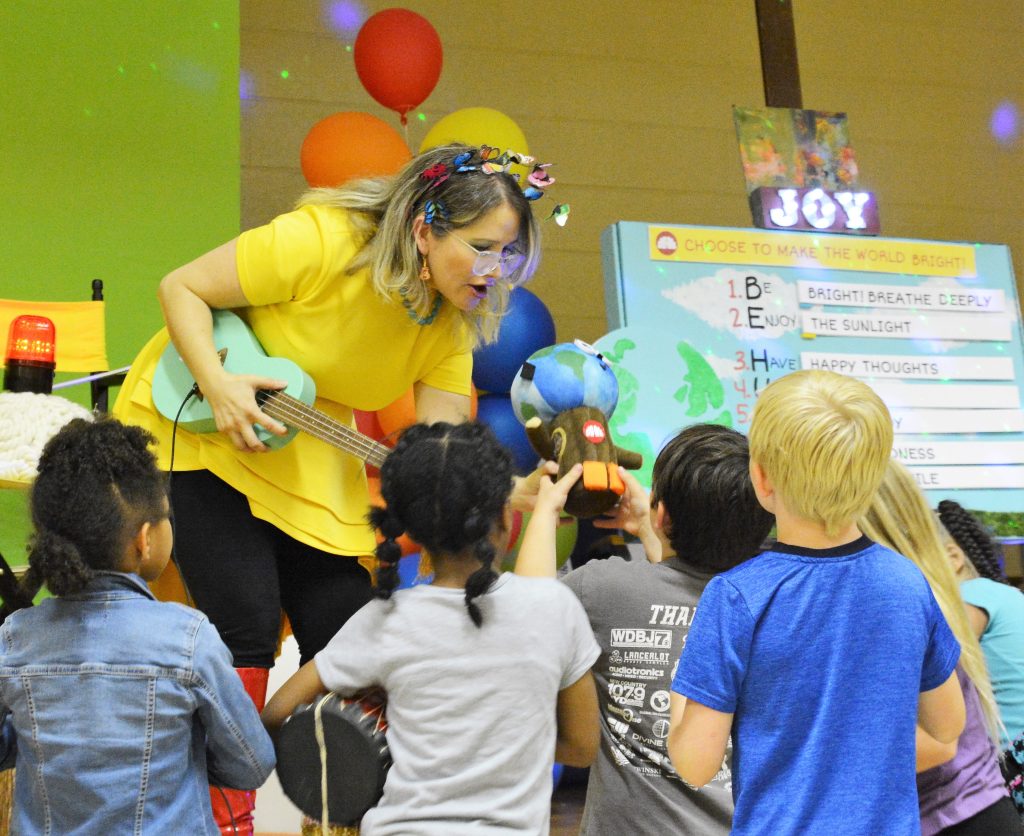
to the children.
She called the children to the front of the stage to play a “happy and sad face” game, which
ended up with a list of suggestions for dealing with negative feelings: get outside and enjoy the
sunlight, breathe deeply, have happy thoughts, use a happy tone in speaking to others, give hugs
to others and yourself, move your body (not just your thumbs on a remote or video game), act
with kindness, and never forget to smile.
Her parting advice was to “be human and bring sunshine to the world and choose to make the
world bright.”
According to her website, https://caroljoycreative.com/, “the JOI Neuron approach to wellness,
especially mental health wellness, developed by Joy and Jaimes consists of incorporating health
education into creative writing and music to engage children and adults in enjoyable learning
experiences about their brain, while encouraging positive emotions, imagination, and the
development of many other strengths for life.”
“There is evidence that art-based programs are effective in reducing adverse physiological and
psychological outcomes. Creative expression is a healing process used in both clinical and informal practice to promote wellness. Music is the most accessible and most researched medium of art and healing. Music calms neural activity in the brain, which may lead to reductions in anxiety and restore emotional balance.”
Joy collaborated with the Partnership for Community Wellness, VCOM (Edward Via College of
Osteopathic Medicine), and the Boys and Girls Clubs of Southwest Virginia for the program at
Vinton Baptist and at several libraries throughout the valley. Vinton Baptist is home to one of the
Boys and Girls Club programs. Volunteers from the church provided dinner for attendees at the
June 27 program.
Joy will be returning to Vinton Baptist to present the program again on July 13—a free family
event for “ages 5 to 150.”
Her book, “Geo: a Magical Surprise” is available on Amazon.
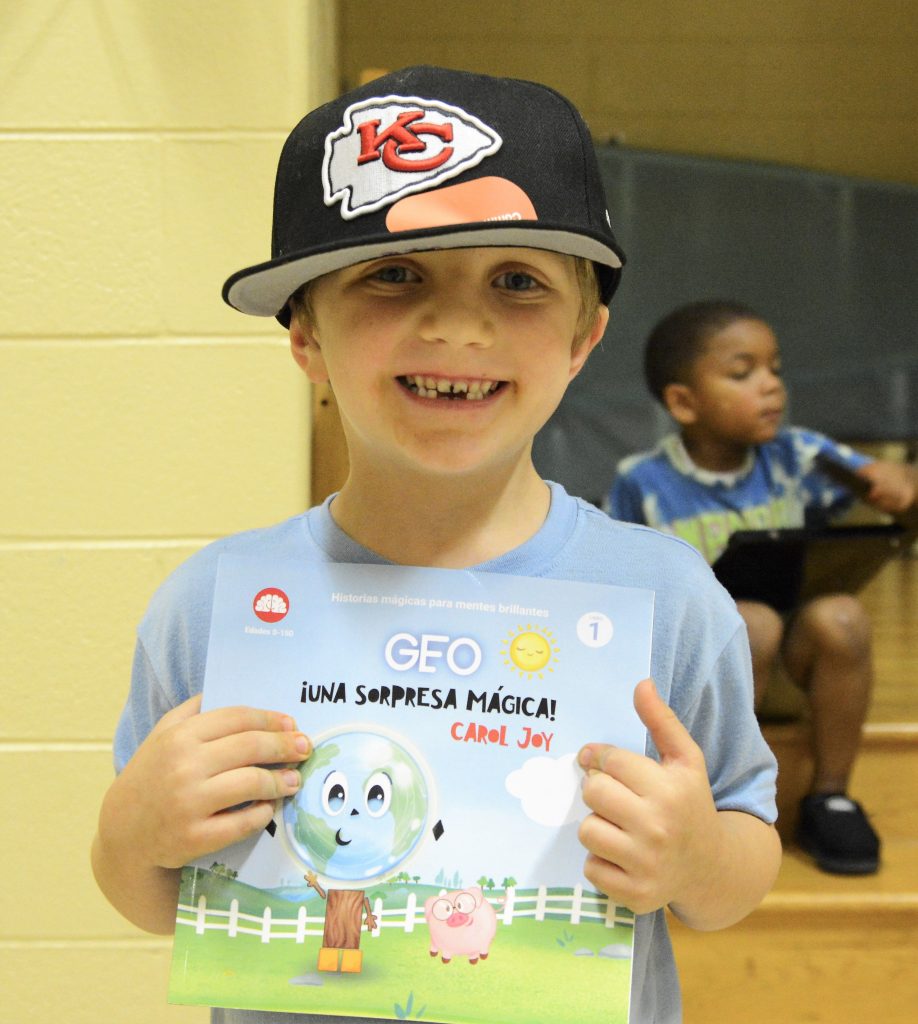
“World Inside Your Head” program at Vinton Baptist won a copy of Joy’s book “Geo: A
Magical Surprise” in a raffle. He chose the Spanish version.
